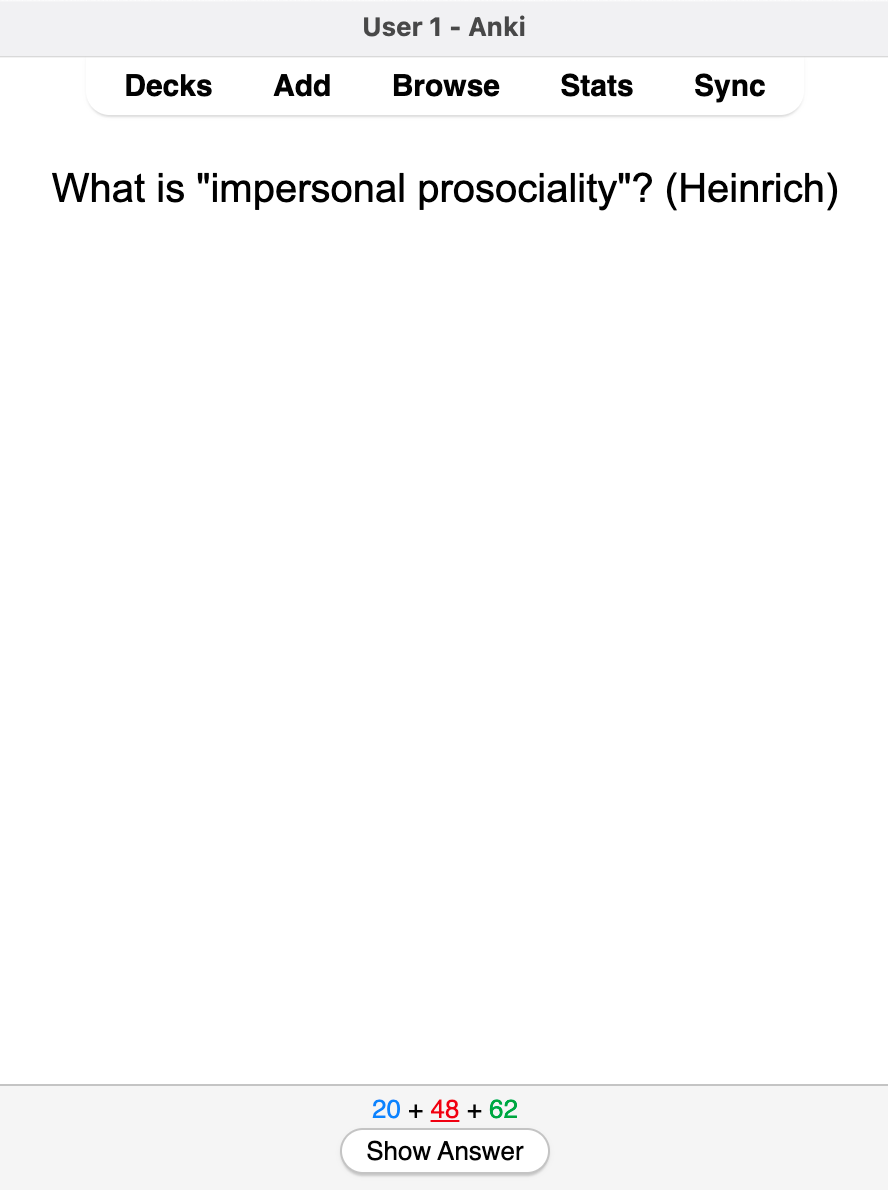How to Superstudy
Here’s how I study.
First, I optimize for time. I’m billing out right now at a rate that feels extraordinary to me. I want to make sure I’m valuing my time at the same rate that other people are valuing it.
Second, I don’t want to sacrifice depth. Cliffnotes, Blinkist, etc. don’t cut it — I don’t just want to have cocktail party knowledge, I want to actually think.
Third, I want to synthesize easily. The best ideas I’ve ever had are a mix of other ideas. Everything is a remix. I built and sold a successful business on the backbone of a silly and offensive acronym that I made up while bored at work years prior. You never know what’s going to stick.
Fourth, things should be sticky. My learning is pointless if I understand it and forget it later. This may be obvious for you, but as someone diagnosed with moderate-to-severe ADHD, it is critical to me.
To make this work for me, the system must be flexible enough that I can adjust it based on my level of enjoyment and enthusiasm. It should be something I want to do, not a chore. And it should be time flexible - sometimes I have hours, sometimes I only have a few minutes.
Enter Superstudying.
I start by finding a book that I’d like to read. I’ll start with this one, because it is both highly recommended and incredibly boring-looking.
Side note here, I keep track of every time a book is recommended to me, and how many times it’s recommended. I don’t always go in order, but that list is helpful when I want to learn something new.
Ok, now I take the file for this book and make sure that it’s either a PDF or TXT file. I use a free program called Calibre to do file conversion.
I upload it to an AI program by Google called NotebookLM. AI notebooks are growing fast, there will probably be a better way to do this by the time this article is published. From there, I will generate a podcast.
You heard me correctly - Google’s AI will create a podcast with two TOTALLY MADE UP BUT VERY REAL voices, discussing the book that I uploaded. The new world is fun. Hail to the robots.
While it generates, which takes a few minutes, I also ask it to create a Study Guide.
So far (assuming you have the book), it’s taken you longer to read this than it has for me to generate a podcast and study guide.
Next I create flashcards from the study guide. The goal here is spaced repetition - I want to remember what I’m learning. I use the Anki program for flashcards, it’s the easiest to use in my opinion.
When making flashcards my system is simple: I study what I want to study. Anything that seems useful now or in the future. I only make cards for the things that interest me. Remember, I’m doing this because I want to. It’s fun.
At this point I’ll also have a good idea about whether I care about the book in question. Sometimes I think I want to read something, but when I dive in it’s just dull. The study guide will usually give me a good indicator. Remember, ADHD. If I’m not interested, I’ll just drop it.
By the time you’ve generated the guide and made flashcards, the podcast should be done.
Here’s an example of what the podcast might sound like.
Now I listen and learn. I often wash the dishes while listening. As I listen to the podcast, I make additional flashcards in Anki — the Study Guide doesn’t capture everything. Neither does the podcast, really, but it gets closer.
Almost every day, usually during lunch, I review my flashcards. I have them in spaced repetition mode so it doesn’t take terribly long.
In an hour lunch break, I can digest an entire book, learn the principles of it, think about them, and begin memorizing them in a sticky way. At any point, I can stop the process. But usually, over about 30-45minutes, I can have an understanding of an author’s major points.
We talked about what happens if I don’t like the book. But let’s say I do. I can also dive in further. I can upload that same text to ChatGPT (or keep it in NotebookLM) and interrogate it — great for understanding difficult research. I can actually read the book(!) - I usually do that in Readwise Reader , so I can save and search my highlights. I can take those highlights and export them to Roam Research, where I keep my notes.
But perhaps most importantly, I can write. This is where the synthesis comes in. I will annotate my notes, write essays on WHAT I ACTUALLY THINK. This is the most difficult part for me - it’s easier to understand the opinions of others than to have my own. Sometimes I’ll even publish my writing.
When I write, I’m not trying to tell someone what to think. I’m writing to share how I think.
Superstudying is great for easily distracted people. At any point I can stop the process. I can go days without doing it at all. I can upload fun books, serious books, weird books. The time investment is minimal, and the reward is stratospheric.
My recommendation - don’t try to copy exactly what I do. Experiment with your own system - see what works.
Love you!
Noah







